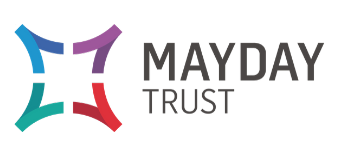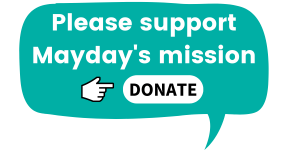The Illusion of Choice. Person-led or just a Buzzword?
Andy Durman, PTS Coach at Mayday, reflects on what it means to be ‘person-led’ in the current system available to people experiencing homelessness.
How often do we hear that services are person-led and that if things haven’t gone to plan (the services plan that is), it was due to an individual’s poor decisions? Yet when we speak to people who have experienced these ‘person-led’ services the story sounds very different and the impact/damage of such experiences is sadly, very evident.
When you look a little closer and having worked within the system and listened to many people experiencing it, it’s easy to see how you can create the illusion of being person-led. Many organisations honestly believe that the people they work with have full control and power over their lives and direction – this might be the case, as long as someone moves through the right pathway, making the right decisions that is. If things don’t work out organisations can seek reassurance that it was the individual’s choice ‘not to engage’, rather than reflecting on the impact of the system or even their own role on that particular outcome.
The system currently dictates a person’s story, their choices and the direction that’s right for them. For example:
You find a place in a hostel, you are told you can stay here for six months. On your referral it states you have risks around alcohol intake and debt, so you will be signposted to a substance misuse service and must attend an in house budgeting course.
Once you are ready (in six months, after you have proven you are ‘tenancy ready’) you will be recommended to the local authority who will look to get you into a property. It is unlikely that you will have any control over where you are accommodated and largely felt that you should be grateful for whatever you get.
Unfortunately it’s very possible that this property will feel sterile and due to its new location away from everything you know and your networks you will also feel isolated.
However it is still your choice whether you would like to engage/do/agree with this plan that has been created for you. If you do choose to successfully ‘move on’ and understandably you find it hard to adjust and make it work, you will have made yourself ‘intentionally homeless’ and forfeit any support in housing from the local authority. You chose to fail and the system has done everything it could to support you.
I struggle to see any person-led approach within this. I fail to see where the person and what they feel they need from the system comes through. This system will never work. That individual will re-enter the ‘cycle of homelessness’ of which so many organisations claim to break.
If you find yourself back at a hostel (probably the same one) you will be vigorously interviewed, asking what happened, why did it not work, what did you do that made it fail? And so it starts all over again, only this time probably with some additional arrears from your former sterile and isolated ‘home’ that you chose to leave. Each time you re-enter the system, more of your dignity, humanity, character, personality, talents and skills get stripped away. 10 years down the line and you are an entrenched, hard to reach, complex homeless person.
What I will say is that by some miracle this does not happen to everyone and this is 100% down to those individuals own unimaginable resilience, strength and courage and those professionals within the system who are mavericks, who see individuals as people, who focus individual context and strengths, who recognise the barriers the system creates and who walk alongside people going through tough times without an agenda.
We need to change the narrative of the system so that the individual has the freedom to write their own story. To be the author of their own lives. Then we can say we are truly person-led.











